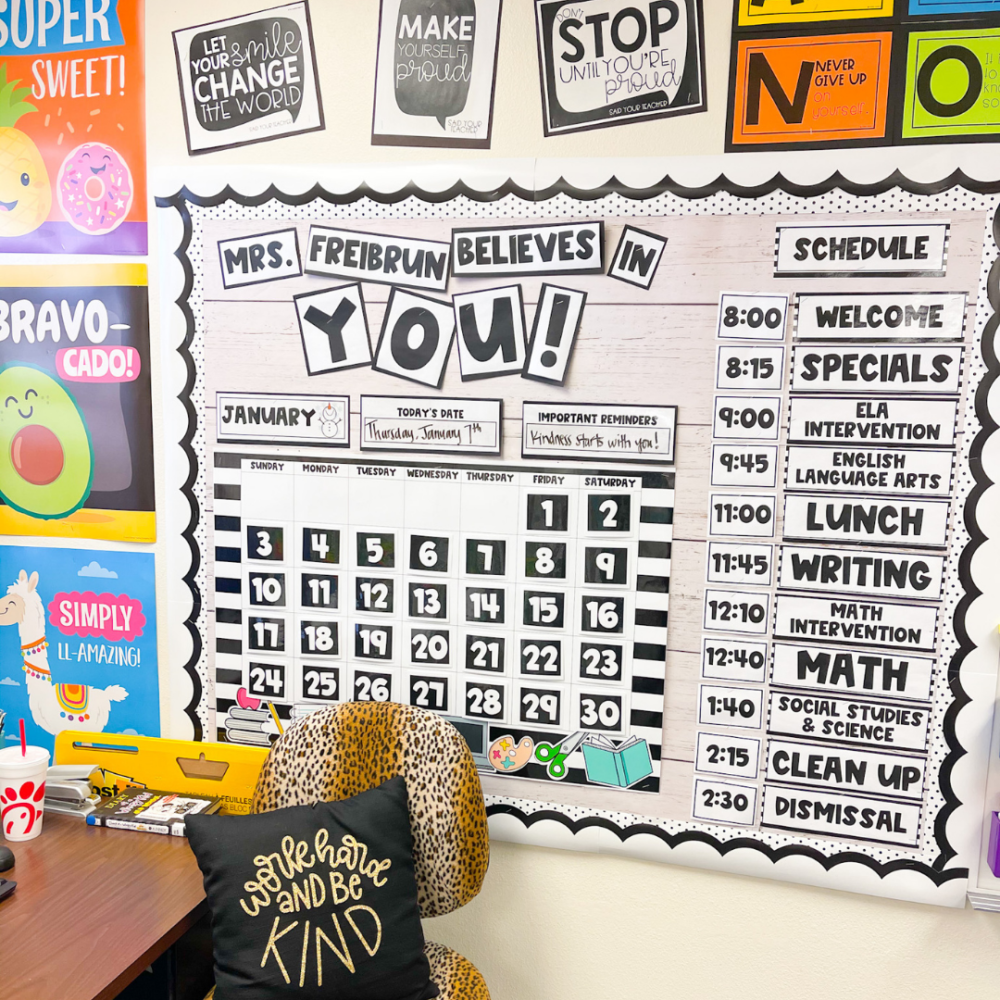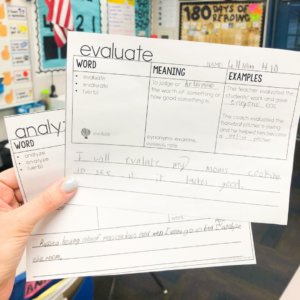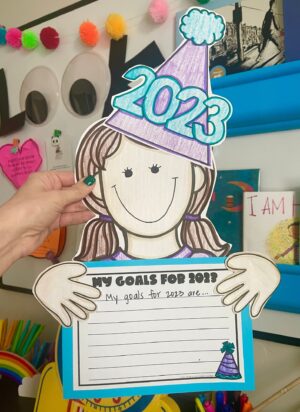As the doors of a new school year swing open, the first week sets the tone for the months ahead. Within the excitement and anticipation, the role of teacher clarity becomes important. Clear communication and well-defined expectations, also known as teacher clarity, lay the foundation for a productive classroom environment. Read below to find out the importance of teacher clarity during the first week of school, and learn about practical strategies that will ensure a smooth start.
Why Teacher Clarity Matters from Day One
The first week of school is a pivotal time when students form their initial impressions of the classroom, the teacher, and the learning journey ahead. Establishing teacher clarity during this crucial period is extremely important.
Teacher clarity cultivates trust and comfort. It means you have clear communication and predictable routines which create a safe and comfortable space for students to learn and express themselves. Through teacher clarity, you can minimize your students’ anxiety. By having well-defined expectations and a transparent understanding of classroom procedures, you’ll alleviate uncertainty and reduce student anxiety.
Teacher clarity fosters engagement. Your students are more likely to engage enthusiastically when they understand the purpose of activities and how they fit into the bigger picture.
When you cultivate teacher clarity in your classroom, you lay the foundation for learning. A structured and organized environment allows students to focus on learning, as they know what is expected and how to meet those expectations.
Teacher clarity holds students accountable for their actions and responsibilities, fostering a sense of ownership in their learning.
So, how can you start with teacher clarity during the first week? Here are 10 ideas:
10 Strategies for Cultivating Teacher Clarity in the First Week
1. Clear Classroom Rules and Expectations
Take time to clearly introduce and discuss your classroom and behavior expectations, as well as daily procedures. Don’t just tell students what to do. Explain the “why” behind each expectation so they understand the purpose. Walk through procedures step-by-step, and model what they look and sound like in action. Use visual aids like posters, anchor charts, or infographics to reinforce key points and serve as ongoing reminders. Revisit these expectations regularly during the first week to help students feel confident, safe, and ready to learn.
2. Transparent Daily Schedule and Routines:
Give students a clear and consistent overview of what to expect each day. Share the daily schedule, upcoming assignments, assessments, rubrics, and due dates in a place that’s easy for students to access, like a class website, board, or digital platform. Be sure to display the daily schedule in the classroom so students can see it as soon as they walk in. This not only helps reduce anxiety, but also supports time management and independence. When students know what’s coming, they can stay organized, focused, and more engaged in their learning.
3. Goals and Objectives:
Early in the first week, take time to talk with students about the kinds of things they’ll be learning this year, and why it matters. Share the big-picture goals and explain how each one connects to their personal growth, both in and out of the classroom. Let them know that you’ll be clearly posting and discussing daily learning goals so they always know what they’re working toward. When students understand the purpose behind their learning and can connect it to real progress, they’re more motivated, more engaged, and more likely to take ownership of their learning journey.
4. Icebreakers and Team-Building:
Plan icebreaker activities that go beyond surface-level introductions and help build a strong classroom community. Choose activities that give students the chance to share about themselves, learn about their classmates, and start forming meaningful connections. Look for ways to tie the icebreakers into your classroom values, like teamwork, empathy, and active listening, so students begin to understand what kind of environment they’re a part of. These early experiences help establish a sense of purpose and collaboration, making it easier for students to feel safe, seen, and ready to engage in learning together.
5. Technology and Resources:
Take time during the first week to introduce any technology tools, platforms, or digital resources students will be using throughout the year. Whether it’s a learning management system, online assignment portal, or specific educational app, walk students through how to access each one. Provide step-by-step instructions and model how to use the tools effectively. Give students opportunities to explore and practice using the platforms with low-stakes tasks, and be sure to answer questions along the way. Taking this time early on builds student confidence, minimizes future tech issues, and helps create a smoother, more independent learning experience.
6. Interactive Classroom Tour:
Give students a guided tour of the classroom to help them feel comfortable and confident in their new learning environment. Point out the different areas of the room, such as where supplies are stored, where to turn in assignments, where classroom libraries or learning centers are located, and any special spots like a calm-down corner or small group table. As you explain the purpose of each area, invite students to ask questions and explore the space. Helping students understand how the classroom is organized creates a sense of ownership, reduces confusion, and builds a stronger sense of belonging from the very beginning.
7. Clarify Assessment Procedures:
Use the first week to talk openly with students about how assessments will work in your classroom. Explain the different types of assessments they’ll see, how those assessments will be graded, and how the results will be used to monitor their progress over time. Make sure students understand that assessments are not just about scores or final grades, they’re tools that help both the teacher and the student understand what’s working and what needs more focus. Emphasize that assessments are part of the learning process and are meant to support their growth, guide instruction, and celebrate progress along the way. This helps create a healthy, low-stress attitude toward assessment right from the start.
8. Open Communication Channels:
Create clear and consistent ways for students to communicate with you throughout the year. Let them know how they can ask questions, seek clarification, or share their ideas—whether that’s by raising their hand, leaving a note, sending a message through a digital platform, or speaking with you privately. Encourage students to speak up when they’re confused or curious and reassure them that their thoughts and questions are always welcome. Taking time to establish open, respectful communication early on helps build trust and creates a classroom environment where every student feels heard and supported.
9. Daily Routines and Transitions:
Clearly outline the daily routines your students will follow, starting from the moment they enter the classroom to when they leave at the end of the day. Go over entry and exit procedures, how to transition between subjects, expectations during independent work time, and what break times will look like. Model each routine and give students time to practice so they feel confident and comfortable. When students know what to expect throughout the day, it creates a sense of stability and structure that helps them feel safe, focused, and ready to learn.
10. Personalized Introductions:
Take time during the first week to introduce yourself to your students in a meaningful way. Share a bit about your background, what brought you to teaching, and what you love about working with students. Explain your teaching philosophy and what you value in a learning environment. Let students know what they can expect from you and what you expect from them throughout the year. This personal introduction helps build trust, sets the tone for your classroom culture, and creates a stronger sense of connection right from the start.
The Ripple Effect of Clarity
By prioritizing teacher clarity during the first week of school, you set a positive trajectory for the entire academic year. Your efforts empower students with the tools they need to navigate confidently, collaborate effectively, and embrace the joy of learning. As the first week unfolds, remember that your clarity will ripple through the weeks, months, and beyond, leaving an indelible mark on your students’ educational journey.

In the grand overture of a new school year, teacher clarity takes center stage. By establishing clear expectations, goals, and procedures from the very start, educators create an environment that fosters engagement, comfort, and growth. For more information about cultivating teacher clarity during the first week of school and beyond, click here.




